Walking Aid for People with Arthritis
Design Entwurf 2.0
This semester, our topic was "Unterwegs", which translates to "on the go". My project focuses on improving the mobility of people with arthritis by designing an innovative walking aid.

Arthritis encompasses various conditions characterised by joint inflammation, leading to pain, swelling, stiffness, and limited mobility. These symptoms significantly impact daily activities, such as grocery shopping and taking out the garbage, often resulting in increased reliance on family embers or caregivers. This dependency can cause feelings of embarrassment and isolation, limiting social interactions and community participation.
To address these challenges, I aimed to develop a walking stick that enhances mobility to develop a walking stick that enhances mobility and quality of life for arthritis patients. My approach involved comprehensive research, including market analysis and direct feedback from people with arthritis through questionnaires. This helped me identify the shortcomings of existing solutions and guided me toward creating a more effective design.
Questionnaire Results
Joints Primarily Affected:

Gender:

How long have you been diagnosed with arthritis?
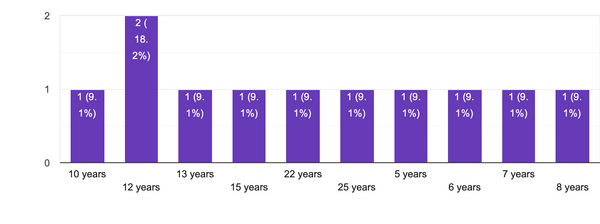
What type of arthritis do you have?

On a scale of 1-10, how severe is your arthritis pain on a daily basis?

Joints Primarily Affected:

How does arthritis affect your mobility and daily activities?

Do you currently use a walking stick/aid? If yes, what type?
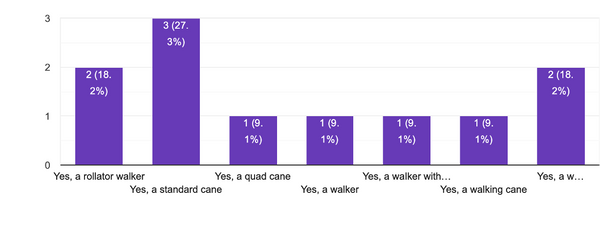
What do you like most about your current walking aid/stick?
"It provides necessary support"
"It's stable and reliable"
"It's easy to carry"
"It's simple to use"
"It offers great support and a seat to rest"
"It's lightweight and portable"
"It's simple and reliable"
"It's very stable and supportive"
"It provides excellent support and stability"
"It's easy to use and realiable"
"It's stable and has a seat for resting"
What do you find challenging about your current walking aid/stick?
"It's not adjustable for different terrains"
"It's bulky and hard to carry"
"Not very supportive on uneven surfaces"
"It's not very comfortable for long use"
"It's very heavy and hard to manoeuvre in tight spaces"
"It's not very stable on slippery surfaces"
"It's not adjustable for different heights"
"It's heavy and cumbersome"
"It's heavy and hard to manoeuvre in small spaces"
"It's not very comfortable for prolonged use"
"It's heavy and hard to fold for transport"
What features would you like to see in a walking aid/stick designed specifically for arthritis patients?
"Adjustable height, ergonomic grip"
"Ergonomic handle, shock absorption"
"Foldable design, more cushioning"
"More cushioning in the handle, shock absorption"
"Lightweight, easy to fold"
"Anti-slip base, adjustable height"
"Lightweight, foldable design"
"Lightweight, foldable, with a comfortable grip"
"Ergonomic handle, adjustable height"
"Lightweight, foldable, comfortable handle"
Preferences regarding material:

Importance of weight of the walking stick:
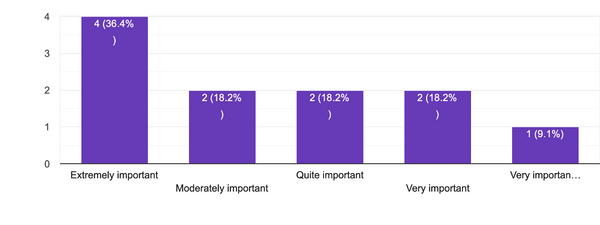
What improvements would you suggest to enhance the comfort of a walking aid/stick?
"Padded handle"
"Better padding on the handle"
"Softer grip"
"Better grip design"
"More ergonomic handle"
"More cushioned handle"
"More cushioning and ergonomic handle"
"More cushioning on the handle and seat"
"Better grip design and cushioning"
"More ergonomic handle and better cushioning"
Key insights from research:
-The handle is the primary point of interaction and crucial for comfort and usability.
-Aesthetic appeal is important for user confidence and regular use.
-Functional needs vary based on the severity of arthritis.
Prototyping and Development:
Focusing on the handle, I explored different grip shapes and materials to reduce wrist strain while maintaining a sleek, crutch-free appearance. The handle design underwent multiple iterations, with careful consideration of ergonomics and aesthetics.

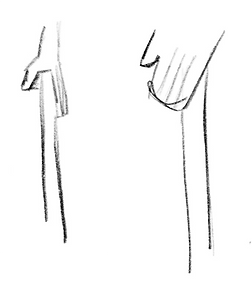




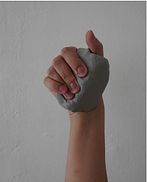











Material Selection:
Handle:
Silicone Rubber Coated Fiberglass Fabric
Gel
EVA Foam
Aluminium
Crutch:
Silicone Rubber Coated Fiberglass Fabric
Gel
EVA Foam
Aluminium


Silicone Rubber Coated Fiberglass Fabric:
-Durability and Strength: fibreglass fabric is known for its high tensile strength and durability, ensuring that the handle can withstand regular use without wear and tear.
-Comfortable Grip: the silicone rubber coating provides a non-slip surface, enhancing grip even in wet or sweaty conditions. This is crucial for users with arthritis, who may struggle with grip strength.
-Flexibility: silicone rubber offers a slight flexibility, which can help absorb shock and reduce the impact on the joints, making it more comfortable to use over extended periods.
-Temperature Resistance: silicone rubber maintains its properties across a wide temperature range, ensuring the handle remains comfortable to touch in both hot and cold conditions.
Gel:
-Pressure Distribution: gel materials are excellent at distributing pressure evenly across the contact surface. This helps to minimise pressure points on the hands, reducing discomfort and pain for arthritis patients.
-Shock Absorption: the gel provides superior shock absorption, which is beneficial in reducing the impact on the joints with each step.
-Customisable Comfort: gel can conform to the shape of the user's hand, providing a customised fit that enhances comfort and usability.
EVA (Ethylene Vinyl Acetate) Foam:
-Lightweight: EVA foam is very lightweight, which helps in reducing the overall weight of the walking aid, making it easier to handle and carry.
-Cushioning: EVA foam offers excellent cushioning properties which can reduce the strain on the hands and wrists during use.
-Durability: This foam is resistant to cracking and has a long lifespan, ensuring that the handle remains in good condition over time.
-Moisture Resistance: EVA foam does not absorb water, making it ideal for use in various weather conditions and ensuring the handle stays dry and hygienic.
Memory Foam:
-Pressure Relief: Memory foam is renowned for its ability to distribute pressure evenly across the contact surface. This is particularly beneficial for users with arthritis, as it helps to minimise pressure points on the hands, reducing pain and discomfort.
-Personalised Fit: Memory foam conforms to the unique shape of the user's hand, providing a personalised fit that enhances comfort and usability. This customisation can be particularly helpful for users with deformities or irregularities in their hand shape due to arthritis.
-Shock Absorption: the viscoelastic properties of memory foam offer excellent shock absorption, which helps to mitigate the impact on joints with each step. This reduces the strain on the hands and wrists, making the walking aid more comfortable to use over extended periods.
-Temperature Sensitivity: Memory foam is temperature-sensitive, meaning it softens in response to body heat, allowing it to hold more effectively to the user's hand. This can enhance comfort, especially in cold weather when stiffness and joint pain are more pronounced.
-Durability: High-quality memory foam maintains its shape and supportive properties over time, ensuring that the handle remains comfortable and effective with regular use.
-Moisture Resistance: While memory foam itself is not inherently moisture-resistant, it can be combined with moisture-wicking covers ir treatments to ensure that it stays dry and hygienic, even with prolonged use.
Aluminium (Base of Stick):
-Strength and Stability: Aluminium is known for its high strength-to-weight ratio, providing a stable and sturdy base for the walking stick without adding excessive weight.
-Lightweight: Aluminium is much lighter than other metals which is crucial for making the walking stick easy to use and carry, especially for individuals with reduced strength.
-Corrosion Resistance: Aluminium has excellent resistance to corrosion, ensuring the walking stick remains functional and aesthetically pleasing over time, even with regular outdoor use.
-Sleek Appearance: The metallic finish of aluminium contributes to a sleek and modern design, enhancing the overall aesthetic appeal of the walking aid.
----------
Final Prototypes:
The result is a series of prototypes that cater to different levels of arthritis severity, ensuring functionality without compromising on aesthetics. By addressing both ergonomic and visual aspects, my designs aim to boost user confidence and encourage regular use.
I decided to create a walking aid with an innovative attachable component that transforms it from a walking stick to a crutch. This design ensures that users can adapt their mobility aid to their specific needs with ease.
Another interesting aspect of the design is the absence of traditional straps. Instead, the curves on the handle act as the securing mechanism, enhancing ease of use and comfort.
The handle is designed with specific curves that naturally conform to the shape of the user's hand, providing a secure grip without the need for additional straps or fastenings. To use the handle, you simply rotate your hand, place it in the handle, and then straighten your hand. This design ensures that the walking aid is easy to grip and hold securely.
By eliminating straps, the handle reduces potential pressure points and discomfort, offering a more comfortable and user-friendly experience. This strap-free handle design not only simplifies the use of the walking aid but also improves the overall user experience, making it a practical and comfortable choice for people with arthritis.

Walking Stick Mode: the primary component functions as a standard walking stick, providing essential support and stability for daily activities.


Arm Component


Crutch Mode: by simply attaching the arm component, the walking stick can be quickly converted into a crutch. This transformation is achieved by clicking in the arm support, screwing in the support beam into the main stick, and extending the stick to the appropriate height.

This project is a step towards improving the lives of people with arthritis by providing them with a walking aid that is both functional and aesthetically pleasing. By eliminating the need for compromise between necessity and appearance, my designs aim to enhance independence and quality of life for arthritis patients.